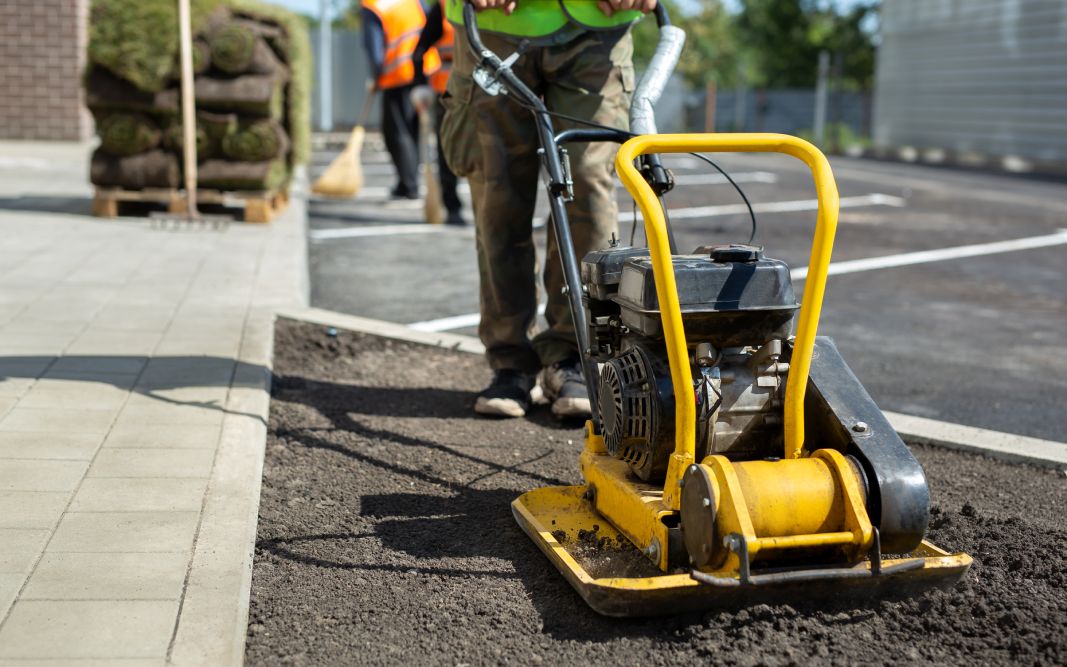
If you’re planning an outdoor project, you might be wondering what really sets pavers apart from paving. In simple terms, pavers are those charming, individual pieces that can create eye-catching patterns, while paving involves laying down a continuous layer of material like asphalt or concrete. Both have their perks—and knowing which one suits your needs can make a big difference.

What You Need to Know
- Pavers: These building blocks create stunning patios, walkways, and driveways with a decorative twist. They come in a variety of colors, shapes, and materials like brick, concrete, or natural stone.
- Paving: This technique uses asphalt or poured concrete to form a smooth, durable surface ideal for roads, parking lots, and high-traffic areas.
- Both methods can be eco-friendly—think permeable pavers or modern green paving mixes—to help manage water runoff and support sustainable landscaping.
Pavers: Adding Style and Flexibility
Pavers are perfect if you love a bit of design flair. They let you mix and match colors and shapes to create something truly unique. Because they’re individual pieces, if one gets damaged, you can easily replace just that one without redoing the entire surface.
Why Choose Pavers?
- Custom Look: Tailor the pattern to your taste—whether you prefer a classic or modern design.
- Resilience: Built to handle weather changes and freeze–thaw cycles without cracking.
- Easy Fixes: Replace individual units quickly without disrupting the overall design.
- Eco-Friendly Options: Permeable pavers allow water to seep through, reducing runoff and benefiting your garden.
Maintenance and Sustainability Tips
- Keep them clean by sweeping and power-washing regularly.
- Apply a sealant every few years to guard against sun and rain.
- Check the joints and refill with sand or polymer mix to keep everything stable.

Paving: For a Smooth, Long-Lasting Surface
If your project demands a uniform, sturdy surface that can take a beating—like a busy road or parking area—paving might be the better option. Paving creates a solid, continuous layer that can support heavy traffic and lasts for many years with proper care.
Benefits of Paving
- Strength: Engineered for heavy loads, paving is a solid choice for high-traffic zones.
- Efficiency: The continuous surface is quicker to install over large areas using modern machinery.
- Weatherproof: Paving holds up well in extreme weather when installed with proper drainage.
- Cost Effectiveness: Lower upfront costs for big surfaces, though regular maintenance is needed.
Maintaining Paved Surfaces
- Inspect regularly for cracks and potholes, repairing them promptly.
- Ensure proper drainage during installation to prevent water pooling.
- Plan for resurfacing every 10–15 years to keep the surface smooth and safe.
Side-by-Side: Pavers vs. Paving
| Aspect | Pavers | Paving |
|---|---|---|
| Material Options | Brick, concrete, natural stone, porcelain | Asphalt, poured concrete |
| Installation | Individual units laid in creative patterns for a custom look | A continuous surface applied with machinery for speed and efficiency |
| Design Flexibility | High—ideal for personalized layouts and decorative touches | More functional, best suited for uniform surfaces in high-traffic areas |
| Maintenance | Easy repairs by replacing individual pieces | Requires periodic resurfacing and crack sealing |
| Cost | Higher initial cost per unit but lower repair costs over time | Lower upfront cost for large areas, though maintenance expenses can add up |
| Eco-Friendly Options | Permeable designs available for effective water management | Green paving technologies emerging to reduce environmental impact |
Frequently Asked Questions
What are the benefits of using sustainable outdoor pavers for residential landscaping?
Sustainable outdoor pavers not only offer a beautiful, customizable look but also help manage water runoff and reduce environmental impact. They allow water to seep through, which can help recharge groundwater and reduce the risk of flooding in your yard.
How does asphalt paving compare with concrete paving for high-traffic commercial areas?
Both asphalt and concrete paving are designed for durability. Asphalt paving is often faster and less expensive to install over large areas, making it popular for commercial use. Concrete paving, on the other hand, may offer a longer lifespan with less frequent maintenance, though it typically comes at a higher initial cost.
What are the maintenance requirements for decorative paver installations?
Decorative paver installations require regular cleaning to remove debris, periodic power-washing, and sealing every few years to protect against weather damage. Checking and replenishing joint material is also essential to maintain stability and prevent weed growth.
Which option is more cost-effective in the long run: pavers or paving?
The answer depends on your project’s scale and purpose. Pavers tend to have higher upfront costs but allow for simple repairs, making them ideal for decorative, low-traffic areas. Paving generally has a lower initial cost for large, high-traffic surfaces but may require more extensive maintenance over time.
How do permeable pavers contribute to sustainable water management in landscaping projects?
Permeable pavers are designed to let water pass through, reducing surface runoff and allowing for natural water absorption into the ground. This feature is particularly valuable in urban areas, helping to prevent flooding and reduce the strain on municipal drainage systems.
Wrapping Up: Which Option Is Right for You?
At the end of the day, your choice between pavers and paving comes down to your specific needs. If you’re looking for a stylish, repair-friendly solution with plenty of creative freedom, especially for a residential project, pavers are an excellent choice. On the other hand, if you need a continuous, high-performance surface for a commercial or high-traffic area, paving might be more suitable.
This guide is here to help you make an informed decision in plain, friendly language. By balancing aesthetics, functionality, and long-term maintenance, you can create an outdoor space that not only looks great but stands the test of time.



